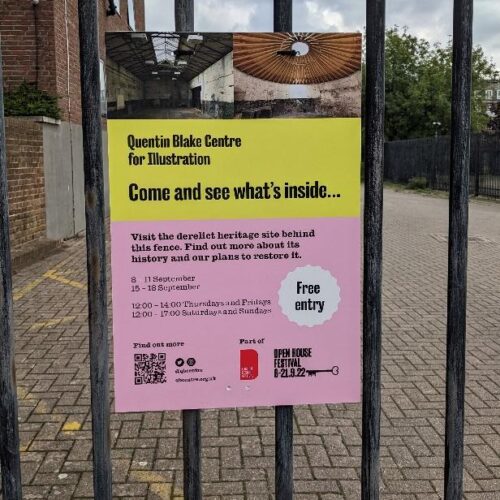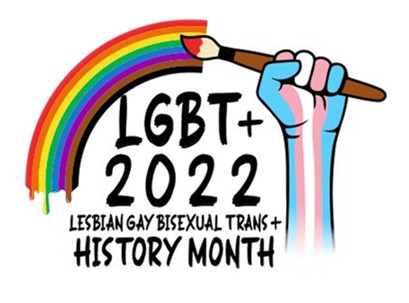
Introducing Emma Powell
Emma is a new Visual Communications tutor at OCA who specialises in printmaking, bookmaking, collage, experimental type and paper-crafts. As well as being an HE lecturer and artist she is a co-founder of we love your books. She also has a PhD in Sustainable Design. See more of her work at www.rejectamenta.com
Experimental books
I have made one-off, experimental books for about 15 years. Currently my books combine interesting formats with any of the following: printmaking, paper-cut, Letraset, letterpress, screenprinting, collagraphs, recycled materials and digital printing. My work is often about secrets and hidden layers of text.


I started making books whilst studying for an MA in Design. These then progressed as part of my PhD. During that time I also started teaching traditional and experimental book formats to students at The University of Northampton and De Montfort University, Leicester. Out of this emerged we love your books – a book arts collaboration with book artist Melanie Bush. We curate a yearly themed exhibition open to all – see more at www.weloveyourbooks.com
PhD research – rejectamenta
For as long as I can remember I have been interested in collecting pieces of ‘worthless’ rubbish (rejectamenta) or picking up weathered natural forms. My PhD research was an attempt to rationalise and legitimise my creative process. I investigated the rejectamenta location, selection, rejection and collation habits of 108 creative practitioners and myself. I gathered data via an on-line questionnaire and created a diagrammatic Rejectamenta Audit Trail. This plotted the respondents’ collection and use of rejectamenta.
I also created a body of visual work inspired by rejectamenta. My journey was documented via many sketchbooks and culminated in a solo exhibition. The final visual piece consisted of: rejectamenta resource 10 boxed collections of themed rejectamenta and rejectamenta collection a small slip-case containing 5 booklets covering different areas of my visual work.




Influences
Three memories stick in my mind from my childhood. Firstly, I am watching an episode of ‘Fingerbobs’ (1970s BBC1). A crow is trying to drink water out of a container but the level is too low. It fills the container with smooth pebbles that glisten in the studio lights. I am enthralled!
Secondly, I am sitting on Aldeburgh beach, Suffolk and am searching for little pieces of ‘treasure’. On returning home everything was categorised, according to size, colour and texture. A few of the most special ‘finds’ were kept out on display.
Finally, after school, I am watching The Wombles (1970s BBC1). I am engrossed in a fantasy world created mostly from found objects. My future path was already set – I just didn’t know it…
My long-time appreciation of the work of Henri Matisse, Raoul Dufy, Antoni Gaudi and Paul Klee helps to explain my love of colour, texture and pattern. The sculptural work of Andy Goldsworthy, the printmaking of Peter Blake, the sketchbooks of Candy Jernigan, and the illustration work of Maira Kalman, Richard Scarry and Quentin Blake are always sources of inspiration. I was recently blown away by the work of Mira Schendel at The Tate Modern, London. Her experimental type work and hand lettering effectively crosses the boundaries of art and design. This is a really exciting position to work from and I also enjoy having a foot in each camp.
Fancy reading a bit more about the topics I have covered?
Barson, T & Palhares (2013), T, Mira Schendel, Tate Publishing, London.
Calloway, S (2004), Obsessions: Collectors and Their Passions, Mitchell Beazley, London.
Cerny, C and Seriff, S (1996), Recycled Re:Seen – Folk art from the Global Scrap Heap, Harry N Abrams, New York.
Champeney, A (1999),Reclaimed – Recycling in Contemporary British Craft and Design [exhibition publication], The British Council, London.
Coote, J, Morton, C & Nicholson, J (2000),Transformations – The Art of Recycling [Exhibition Publication], Pitt Rivers Museum, University of Oxford, Oxford.
Dolphin, L (1999), Evidence: The Art of Candy Jernigan, Chronicle Books, San Francisco.
Gale, M (2013), The EY Exhibition – Paul Klee: Making Visible, Tate Publishing, London.
Kalman, M (2009), The Principles of Uncertainty, The Penguin Press
Read, T (2003), The Wombles’ Guide to Life, Arrow Books Ltd.
Waldman, D (1992), Collage, Assemblage and the Found Object, Phaidon, London.
|
|







Some wonderful work there and I’m hoping you’ll be writing more posts on ‘inspirations’.
Thanks I am planning a few more posts.
Thanks for this. I am really interested in what someone recently described as the areas between disciplines. I am studying Printmaking 1 and have just made my first artist’s book.
Thank you. Yes the areas between disciplines are often overlooked.
A great inspiration. I too love artists books and have enrolled in my first creative class as a beginner.
I also found the sketchbooks featured here extremely interesting. We all know what our own ones look like but to have a glimpse into others is always a treat.
Thanks Claire. I am planning a blog post taking one of my sketchbooks from the start to the end of a project. I may use my current project – but I need to finish it first!
I am really interested in book making and have been t doing that in a small way for a few years. I was thrilled to see this introduction to Emma Powell and her work. Emma’s work is an inspiration and the bonus of other sources and research leads is great. I’ve submitted some of my development work this year in the form of made books but this has inspired me to do better on that front!
Annette, thanks for your very kind comments. Which course(s) are you doing?
Love the beautifully presented rejectamenta boxes packed with travel, gig and teabag tags – was just this morning thinking I need to sort the last two years worth of similar from the plastic wallet that’s got stuck next to bank statements (sign of their value, obviously). And particularly the memories of Fingerbobs and Wombles – 70s TV/children’s culture in particular seems to have given a whole generation some really powerful images, all rooted in the quirkiness beyond the everyday…
Thanks for your comments. The 10 boxes I filled held a surprising amount given how small they were. They originally held mice for Macs (hope that makes sense)!